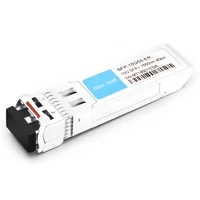The demand for high-speed data transfer in modern networking is forever increasing. Among the fundamental devices that cater to this need is the 10GBASE-ER transceiver. This paper gives a detailed analysis of the 10GBASE-ER transceiver, highlighting its key features, working principles, and applications. The goal is to provide network engineers, IT experts, and technology lovers with comprehensive knowledge of this sophisticated equipment. Considering that it can facilitate long-distance communication through data and improve network efficiency, we shall also look into how the 10GBASE-ER transceiver meets the needs of current networking environments.
Table of Contents
ToggleWhat is a fiber optic module?
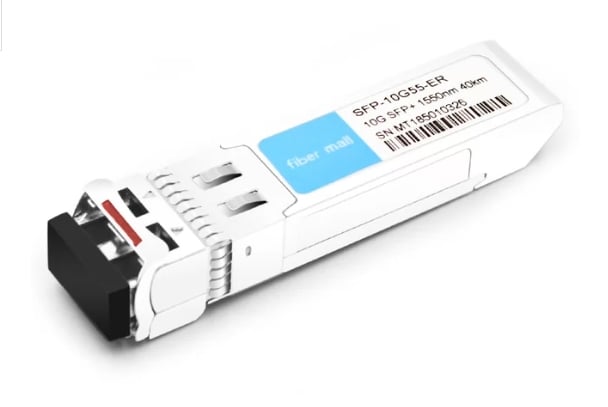
How does a 10GBASE-ER module work?
To extend the data transmission range, 10GBASE-ER is a fiber optic technology module. Single-mode fibers (SMFs) and light sources based on lasers are mainly used to send data over 40 kilometers. The module uses laser diodes to convert electrical signals from network devices into optical signals, which are transmitted through a fiber optic cable. Photodiodes are used at the receiving end to change these optical signals back into electrical ones to establish communication between remote network nodes. With its advanced error correction mechanisms, the 10GBASE-ER module ensures both the integrity and performance of data, making it suitable for use in enterprise systems and telecom applications where there is a high demand for such capabilities.
What are the key features of a fiber optic module?
Some important things about a fiber optic module are:
- High Data Transfer Rates: Supports data rates up to and above 10 Gbps, ensuring that information is delivered fast through devices like Cisco 10GBASE transceivers.
- Far-reaching Transmission Distance: It employs single-mode fiber (SMF) to send optical signals over distances ranging from 40 kilometers or more.
- Low Signal Attenuation: Fiber optic cables have a low loss that allows them to maintain signal strength even when they cover wide areas.
- Immune to Electromagnetic Interference: These cables can withstand EMI and perform well in places with a lot of electrical noise.
- Scalability: It can be easily integrated into the existing network infrastructure and adjusted to cater to increased bandwidth requirements.
- Reliability and Durability: Fiber optic modules are made of solid materials; hence, they last longer and work consistently under different conditions.
- Advanced Error Correction technologies play a significant role in maintaining the integrity of 10GB transmissions over extended distances.: This section uses sophisticated algorithms for error correction to guarantee that data remains intact throughout transmission.
Why is 1550nm wavelength used in fiber optics?
The 1550nm wavelength is used in fiber optics mainly because it has the lowest attenuation rate; that is, it loses signal power over distance very slowly. Moreover, the same wavelength falls within the region of minimum intrinsic absorption and scattering of the medium through which light propagates along an optical cable, hence enhancing clarity and efficiency in transmitting signals. Furthermore, this frequency coincides with the erbium-doped fiber amplifier (EDFA) gain region, which enables effective amplification without much degradation even after such signals have covered long distances. Therefore, these features make 1550 nm ideal for long-haul or high-capacity optical communication systems.
How do transceiver modules function in network equipment?
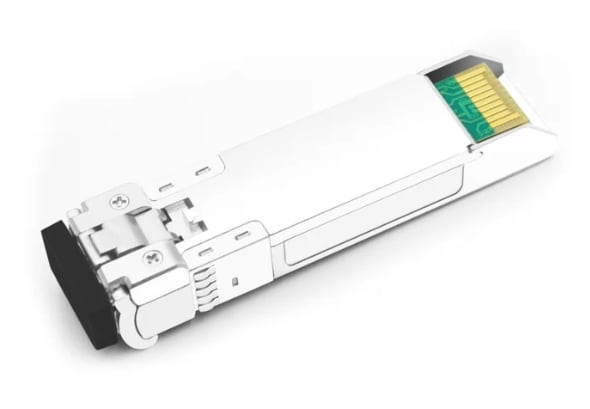
What is the importance of LC duplex connectors?
Modern fiber optic communication systems rely heavily on LC duplex connectors, which are small enough to enable high-density connections in network equipment. The push-pull mechanism locks the connectors so that no loose or weak connections can be made while ensuring they are as easy and quick to disconnect as possible. These connectors have a ceramic ferrule that guarantees accurate alignment of fibers, thereby reducing signal loss throughout any transmission system and improving overall performance. In data centers where space is limited and every inch counts towards efficiency gains, this compact design is invaluable for cable management and scalability with 10GB components within the telecommunications industry. Additionally, following established standards allows for compatibility between different types of transceivers used together with networking devices, thus making LC connectors adaptable anywhere high-speed data needs to be sent across various systems.
How do transceiver modules ensure data center efficiency?
In this data age, the efficiency of a data center can be improved by transceiver modules in terms of high-speed data transfer, energy saving, and scalability. They achieve robust data throughput and support for high-bandwidth applications necessary for current data centers through such advanced technologies as 100G and 400G modules. Power consumption is reduced with a design that conserves energy, essential for lowering operational costs, particularly in those centers with 10GB capacity. Moreover, being modular allows easy upgradeability and scalability thereby enabling adaptation to increasing data requirements without having to change everything about them. All these properties work together to optimize performance within any given system while maximizing efficiency across all systems collectively represented by this concept called “data center.”
Which cables are compatible with 10GBASE-ER modules?
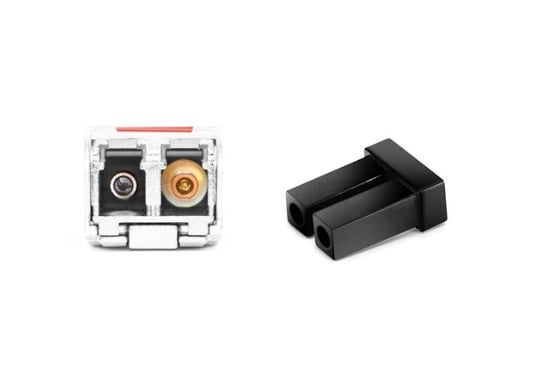
What types of fiber patch cables are used for 10G connections?
Both single-mode and multi-mode fiber patch cords are typically used for 10G connections. For long-haul applications that support up to 40 kilometers with 10GBASE-ER transceivers, single-mode fibers (SMFs) are the best choice; they are usually classified as OS1 or OS2. On the contrary, multi-mode fibers (MMFs), which are classified as OM3 or OM4, should be used for short-reach environments such as data centers; this is because they support up to 300 meters for OM3 and 400 meters for OM4 when used with 10GBASE-SR modules. These cables are terminated with LC, SC, or MPO connectors to ensure compatibility with various transceivers and network equipment, hence enabling high-speed, reliable data transmission across different environments.
How does single-mode fiber differ from other fiber types?
Several vital technical features differentiate single-mode fiber (SMF) from other fiber types, such as multi-mode fiber (MMF). Usually, SMF has a smaller core diameter, around 9 microns, unlike MMF’s 50 to 62.5 microns. This tinier core size supports the propagation of one light mode, significantly reducing attenuation and enabling transmission of data over longer distances without signal repeaters, often beyond 40 km. On the other hand, MMF allows many light modes that can cause modal dispersion, limiting its effective transmission distance to only a few hundred meters. Additionally, SMFs operate at higher wavelengths, usually 1310 nm or 1550nm, enhancing their abilities for long distances further. These qualities have made it the best choice for high capacity, long haul, and metro networks, while multi-mode fibers are more applicable in short distances within DCs and LANs.
How to install and maintain optical transceiver modules?
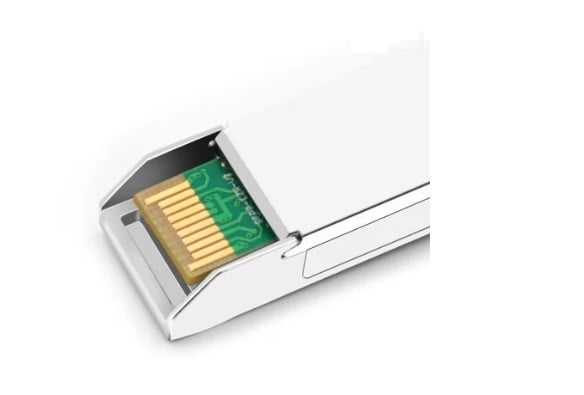
What are the steps to properly install a 10GBASE-ER module?
To induct the 10GBASE-ER module properly, these steps should be followed:
- Establish Compatibility: Verify that your network equipment, such as switches and routers, works well with the 10GBASE-ER module and corresponding fiber optic cables, which should have an LC connector.
- Power Off Device: Shut down or unplug any network device where this module is being installed for safety measures and to avoid damage caused by electricity.
- Remove Dust Cap: Remove the protective dust cap from this module’s connector to prevent contamination of optical surfaces.
- Insert Module: Position it correctly with the transceiver port on a device, then softly push until there is a click, which indicates firm attachment. Do not exert much pressure, or else you may spoil something if you do it wrong.
- Connect Fiber Cable: Link a suitable fiber optic cable(usually single-mode fiber) to the module, ensuring that the cable’s connector is clean so that signal transmission remains optimum throughout.
- Power On Device: Put back the network device’s ‘ON’ power button, thus enabling it to recognize and initialize the newly fixed 10GBASE-ER module.
- Check Operation: Monitor lights (LEDs) showing the status of both modules used at either end plus those found on other devices connected through the same network line; besides, use management tools provided by networks so that performance can be checked while ensuring correct transmission takes place.
These instructions will guarantee proper installation of your 10GBASE-ER module, thereby enhancing its efficiency in terms of speed and reliability, among other factors necessary for better networking.
How to ensure compatibility with Cisco switches?
Making a 10GBASE-ER module compatible with Cisco switches can be done by following these steps:
- Consult Cisco’s Compatibility Matrix: This contains the list of all supported modules for every switch model, as stated in the Cisco Transceiver Module Compatibility Matrix. It can be found on Cisco’s official website and is frequently updated to keep pace with new hardware and software updates.
- Review the product documentation: Check out technical specifications and installation guides provided by Cisco for your particular switch type. Usually, these materials contain information about compatible transceivers along with other requirements or limitations that may exist.
- Firmware Updates: Always ensure that you have installed the most recent version of the software. Sometimes, Cisco makes firmware upgrades available to support different transceivers, among other things. You can get these from their support downloads page.
If you do this, your 10GBASE-ER module will work well with any CISCO switches, enhancing its performance and reliability.
What maintenance practices should be followed for optical modules?
To maximize the lifespan and performance of optical modules, one must be diligent about their maintenance and adhere to best practices. Here are some key things you should do:
- Regular Cleaning: Cleaning fiber end faces is necessary because dust or other contaminants can significantly reduce signal quality. You need some cleaning tools, such as lint-free wipes with Isopropyl alcohol (IPA), to get the job done correctly. Regular cleaning also prevents signal loss, especially in 10GB networks with more issues.
- Proper Handling: Always remember that optical modules are delicate components. You should avoid touching the ends of fibers unless necessary, and protective caps must be used whenever they are not used. When mishandled, contamination may occur, thus physically affecting their performance.
- Environmental Monitoring: Temperature, humidity, and airflow should all be considered when monitoring the environment for optimal modem operation. Overheating can happen if there’s poor cooling or condensation due to extreme atmospheric conditions, among other things, which might lead to failures that could affect any part of the device.
Follow these practices consistently to ensure that your optical modules serve you longer while providing reliable service.
What are the applications of fiber optic transceiver modules?
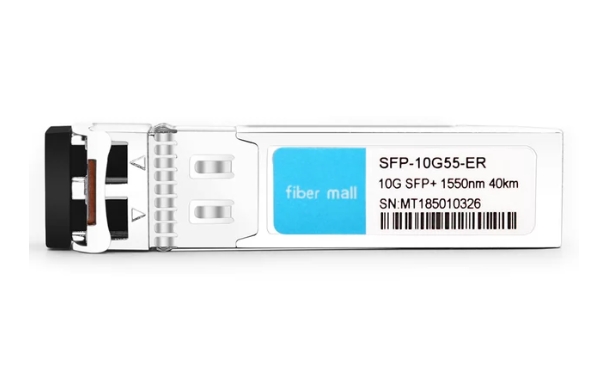
How are 1550nm 40km transceivers used in ethernet networks?
Ethernet networks use 1550nm 40km transceivers to transmit data over single-mode fiber. They are mainly used in metropolitan area networks (MANs) and wide area networks (WANs). In this case, they support high-capacity communication over a distance of up to 40 kilometers. These transceivers function at 1550nm wavelength, which is best for reducing signal attenuation and dispersion, thereby assuring good quality signal integrity at longer ranges. Moreover, they can also be found in enterprise networks and data centers where there is a need to connect different sites that are far apart geographically to enhance the continuous and efficient flow of information across these regions.
Why are gigabit ethernet modules crucial for modern network equipment?
Modules for ethernet, which operate at gigabit speeds, are necessary for today’s networking equipment because they can transfer data very fast, up to 1 billion bits per second. This feature is important for dealing with the ever-increasing requirement of bandwidth-heavy applications like streaming videos, cloud computing, or transferring huge files through technology like SFP. These modules reduce latency as well as increase throughput, thus improving network performance by ensuring that communication is efficient and reliable across different parts of the network. Also known as GbE modules, these devices are essential for future-proofing your network infrastructure. They work with current standards and can be upgraded when needed to handle more data traffic volumes, along with technology advancements that may occur over time.
Reference Sources
Frequently Asked Questions (FAQs)
Q: What is a 10GBASE-ER transceiver?
A: A 10GBASE-ER transceiver is a module that enables data transmission over single-mode fiber (SMF) for distances up to 40 kilometers using a wavelength of 1550 nanometers, as specified by the IEEE 802.3ae standard.
Q: What are the main applications of the 10GBASE-ER transceiver?
A: The usual long-haul and metropolitan area networks (MANs) employ 10GBASE-ER transceivers to facilitate high-speed communication across extended distances. They are often found in switch environments within data centers.
Q: What type of fiber optic cable is used with a 10GBASE-ER transceiver?
A: This type of module typically uses an LC duplex connector to transmit data over a standard single-mode fiber (OS2 SMF).
Q: Is the 10GBASE-ER transceiver compatible with Cisco routers and switches?
A: Yes, Cisco SFP-10G-ER and similar modules can operate alongside different Cisco router and switch models, thus supporting trouble-free integration into existing network infrastructures.
Q: What is DOM, and why is it important in the context of 10GBASE-ER transceivers?
A: Digital Optical Monitoring (DOM) permits users to monitor optical parameters like power, temperature, or voltage in real-time, which can be critical for a good quality signals at such speed as 10 gigabits per second. This feature helps ensure reliability and performance throughout network operation.
Q: How are SFP-10G-ER and SFP+ different?
A: The SFP-10G-ER transceiver is purposely designed for 10 Gigabit data transmission over long distances (up to 40 km), while the SFP + transceiver is for various applications of 10 Gigabits and “ER” type means extended reach by using single-mode fiber.
Q: What is the typical power consumption of a 10GBASE-ER transceiver?
A: Usually, a 10GBASE-ER transceiver consumes more power than short-reach transceivers because it needs higher output power to achieve long-distance transmission. Nevertheless, this may vary depending on the model.
Q: Do you quality test 10GBASE-ER transceivers for compatibility?
A: Yes, manufacturers ensure that each module, such as SFP-10G-ER compatible transceivers, undergoes strict quality testing to ensure compatibility and performance with industry standards like MSA or Multi-Source Agreement and SFF8472, among others.
Q: Can I stack with a 10GBASE-ER transceiver in a network switch environment?
A: Yes, use them within network switches that are capable of stacking. This allows multiple switches to be interconnected so that they work as one logical unit, leading to improved network scalability and management.
Q: What role does compliance with IEC standards play in using 10GBASE-ER transceivers?
A: Compliance with these standards guarantees international safety and performance conformity, making it more reliable and interoperable in different network environments.

